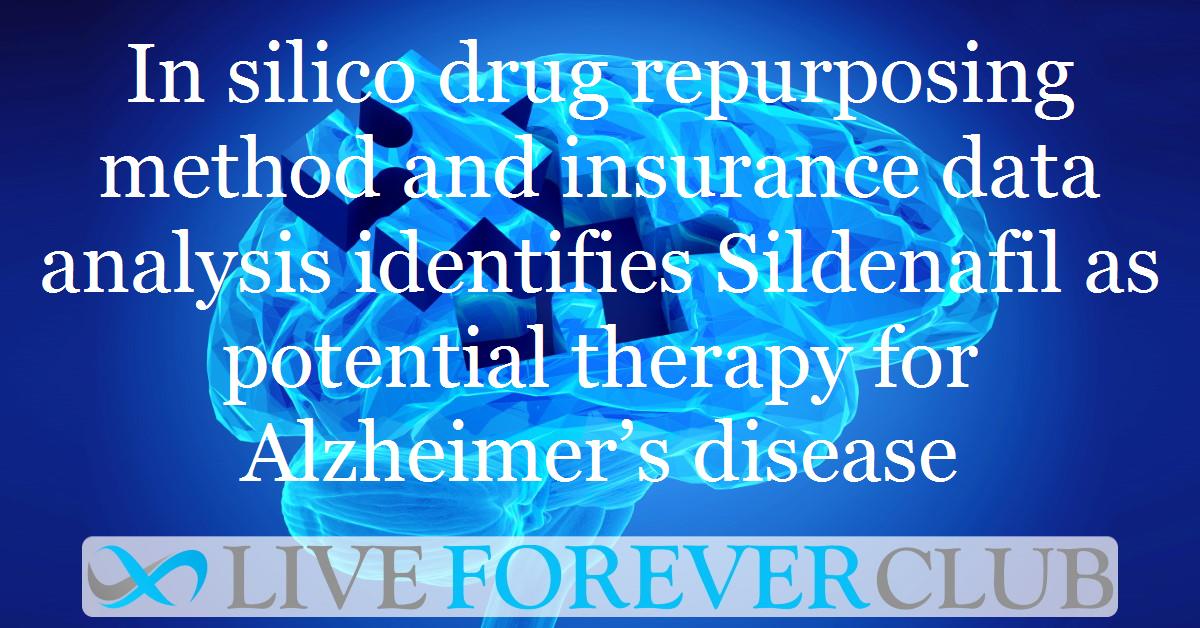A recent study was conducted to find novel drugs that can be used as potential therapy for the neurodegenerative Alzheimer’s disease. The study revealed that Sildenafil, the ubiquitous blue pill used in the pharmacological therapy of erectile dysfunction in men (aka Viagra), has shown potential as a disease risk modifier.
The study involved two parts. The first part involved using disease network modules to identify drugs that may have therapeutic effect on Alzheimer’s disease modification. The second part involved using records from health insurance of a large population base for data mining to evaluate any correlation between Sildenafil use and Alzheimer’s disease occurrence in people.
Alzheimer’s: The current situation
Alzheimer’s disease is a major disease of the nervous system which destroys memory and other important mental functions. Brain cells degenerate and die along with the inter-neuronal connections. This leads to senile dementia which significantly reduces quality of life. Numerous studies aimed at establishing the pathology of Alzheimer’s have focused on two pathways of disease progression:
a) accumulation of amyloid beta protein and associated disease progression cascade
b) neurofibrillary tangles of tau protein fragments in the brain which slow the ability to think and remember
This study has shown sincere scope of possibilities due to the robust observations and advanced models that were used. Mr Edouard Debonneuil deserves to be acknowledged here for bringing this research to our attention at ILA’s International Longevity Day online meet.
1.Endophenotype network-based drug repurposing
Based on our current knowledge and studies of Alzheimer’s disease, state-of-the-art disease modules were created with consideration to genetic and other factors involved in disease establishment and progression. As Alzheimer’s is a multifactorial disease, these modules allowed exploration of these factors to establish new therapies. Based on these modules, network-based analysis models were created to discover new treatment modalities amongst currently existing FDA approved drugs used for other therapies. Basically, the study explored Alzheimer’s treatment potential in drugs which are marketed today for treating other diseases. As medicines have a variety of functions and pathways of affecting their roles in the body, there is always a possibility of drug repurposing by discovering new benefits from drugs which are marketable already. The study, in this case, tried to find drugs which have network proximity (simply put, have higher chances of use case) for Alzheimer’s disease.
Observation
SILDENAFIL, a drug commonly used for treatment of erectile dysfunction, was found to be significantly associated with a reduced risk of Alzheimer’s disease. The results of Sildenafil on the module-based analysis were compared with several other common drugs such as diltiazem, glimepiride, losartan, dantrolene, deferoxamine, lansoprazole and metformin after adjusting for age, sex, race, and disease comorbidities. Vascular dementia (dementia caused by multiple strokes) is a frequent association of Alzheimer’s disease. Sildenafil has been remarkably effective in improving memory and cognitive abilities in trials on rat models of vascular dementia. It was noteworthy to observe that Sildenafil also diminished the magnitude of tau protein accumulation in the brain and associated pathology in transgenic mice models.
2.Population based observational studies
With the potential for Alzheimer’s management observed in the endophenotype based model methodology, Sildenafil was chosen for pharmacoepidemiologic analysis. Sildenafil usage was evaluated against Alzheimer’s disease outcome in 7.23 million commercially insured individuals.
Observation
Patients on long term Sildenafil use were followed up for 6 years. After 6 years, Sildenafil usage was significantly associated with a 69% reduced risk of AD, compared with matched non-Sildenafil users. There is strong association observed between diseases such as coronary artery diseases, hypertension, and type 2 diabetes. But the data was significant for five cohorts done with other medicines in individuals after excluding coronary diseases, hypertension and diabetes as well.
Effect on AD patients’ neurons
To further test the effect of Sildenafil on Alzheimer’s affected neurons, Alzheimer’s disease neurons were isolated from the forebrain and Sildenafil was administered. The Sildenafil treated group was found to have elevated neurite growth and reduced p-tau accumulation (p-tau is an early bio marker for AD and is correlated to cognitive decline progression in patients).
Discussion
The study was strongly corroborative due to multiple factors. The strong evidence derived from the endophenotype based network methodology was supported positively by the interpretations from the mouse-based models. The population based observational study had a large sample size and multiple analysis were made for sub-groups as well to eliminate confounding factors and validate the observations.
There are some negatives that need to be acknowledged as well. The association between Sildenafil use and decreased incidence of AD does not establish causality. Epidemiological studies have a chance of biases integrating into observations due to various confounding factors which are difficult to eliminate in spite of the efforts. Randomised clinical trials need to be conducted to further corroborate these observations.
Author: Joydev Bhattacharjee
References
Endophenotype-based in silico network medicine discovery combined with insurance record data mining identifies sildenafil as a candidate drug for Alzheimer’s disease - Feixiong Cheng, Jiansong Fang, et al (Cleveland Clinic) - Nature Aging – DOI: 10.1038/s43587-021-00138-z









